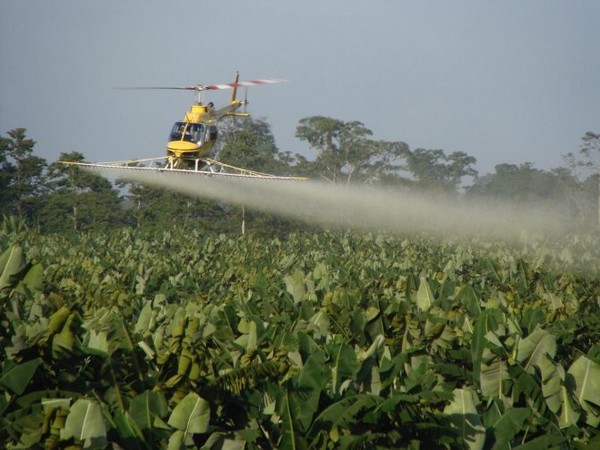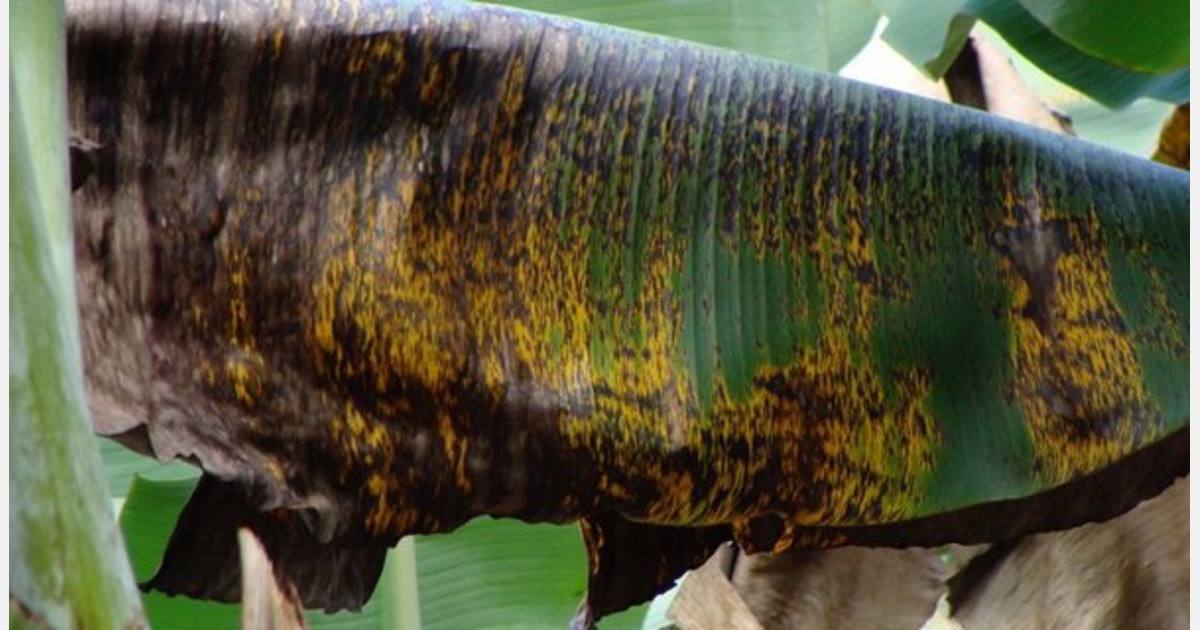Black Sigatoka, together with Panama Disease, is the most feared disease among banana farmers worldwide and is caused by the leaf fungus Pseudocercospora fijiensis. Researchers from Wageningen University & Research and their colleagues have succeeded in analyzing isolates of this fungus from seven banana-growing countries in Latin America, the Caribbean, Asia and Africa for the first time on a large scale. Their research shows that the fungus is rapidly evolving towards pesticide insensitivity as a result of the intensive use of these crop protection products.
The research, published in Pest Management Science, underscores the need to break this vicious circle by developing alternative disease control methods and new banana varieties.
Banana is the most popular fruit in the world and the primary food source for more than 400 million people in the tropics. Cavendish bananas account for more than 50% of world production – and dominate exports (95%) – but are highly susceptible to Black Sigatoka. In most countries banana cultivation is therefore dependent on continuous intensive disease control with the help of azole fungicides. These azoles are also the cornerstone for the control of fungal diseases of other plants, as well as in animals and humans. In most cases, spraying is done on a weekly basis throughout the year. This makes global banana cultivation very vulnerable and unsustainable.

First comprehensive analysis of reduced sensitivity
The now published study is the first comprehensive analysis of the reduced susceptibility to azole fungicides in banana cultivation. In their study, the researchers from Wageningen University & Research (WUR) and their international colleagues analyzed 592 P. fijensis isolates from seven countries in Latin America, the Caribbean, Africa and Southeast Asia for sensitivity to the most commonly used azole fungicides. . They also mapped all mutations in the fungus and the geographic distribution of these mutations. Their study found that all identified mutations could be associated with a reduced susceptibility to the fungicides.
“This reduced susceptibility of the fungus to fungicides is currently leading to a vicious circle of even more spraying in banana cultivation, which is further driving resistance to these fungicides in the fungus,” says Gert Kema, professor of Phytopathology at WUR. “Taken together, these alarming data call for a radical and new rethink of sustainability in global banana cultivation, in the interest of the many producers and workers in the sector, as well as national and international consumers.”
Source: WUR
–


